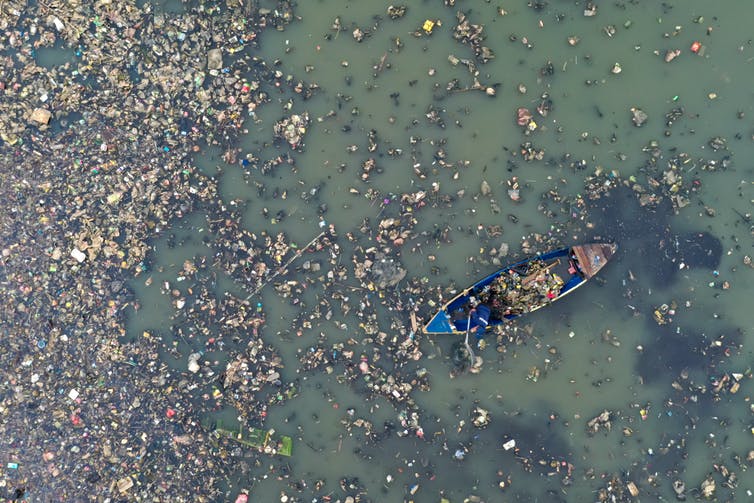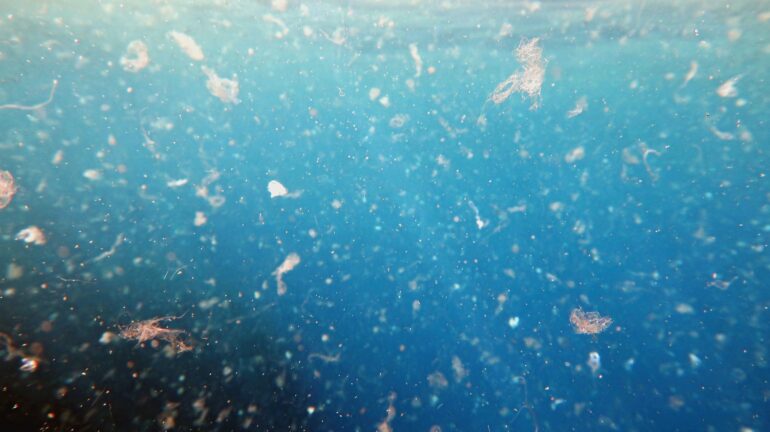Typically when people hear about plastic pollution, they might envision seabirds with bellies full of trash or sea turtles with plastic straws in their noses. However, plastic pollution poses another threat that’s invisible to the eye and has important consequences for both human and animal health.
Microplastics, tiny plastic particles present in many cosmetics, can form when larger materials, such as clothing or fishing nets, break down in water. Microplastics are now widespread in the ocean and have been found in fish and shellfish, including those that people eat.
As researchers studying how waterborne pathogens spread, we wanted to better understand what happens when microplastics and disease-causing pathogens end up in the same body of water. In our recent study published in the journal Scientific Reports, we found that pathogens from land can hitch a ride to the beach on microscopic pieces of plastic, providing a new way for germs to concentrate along coastlines and travel to the deep sea.

Microplastic pollution has negative consequences for human, animal and environmental health.
Yunaidi Joepoet/Moment via Getty Images
Investigating how plastics and pathogens interact
We focused on three parasites that are common contaminants in marine water and seafoods: the single-celled protozoans Toxoplasma gondii (Toxo), Cryptosporidium (Crypto) and Giardia. These parasites end up in waterways when feces from infected animals, and sometimes people, contaminate the environment.
Crypto and Giardia cause gastrointestinal disease that can be deadly in young children and immunocompromised individuals. Toxo can cause lifelong infections in people, and can prove fatal for those with weak immune systems. Infection in pregnant women can also cause miscarriage or blindness and neurological disease in the baby. Toxo also infects a wide range of marine wildlife and kills endangered species, including southern sea otters, Hector’s dolphins and Hawaiian monk seals.
To test whether these parasites can stick onto plastic surfaces, we first placed microplastic beads and fibers in beakers of seawater in our lab for two weeks. This step was important to induce the formation of a biofilm – a sticky layer of bacteria and gellike substances that coats plastics when they enter fresh or marine waters. Researchers also call this sticky layer an eco-corona. We then added the parasites to the test bottles and counted how many became stuck on the microplastics or remained freely floating in the seawater over a seven-day period.
Biofilms are vast communities of microbes that can form on almost any surface, including your teeth.
We found that significant numbers of parasites were clinging to the microplastic, and these numbers were increasing over time. So many parasites were binding to the sticky biofilms that, gram for gram, plastic had two to three…
